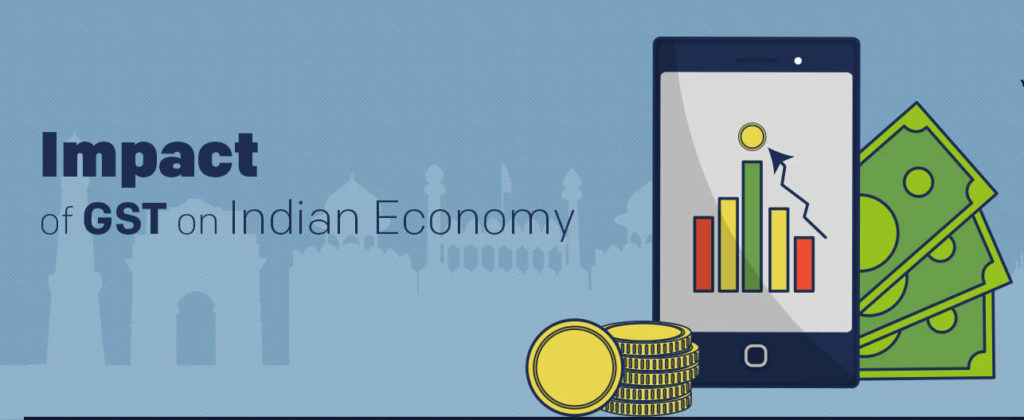Have you ever wondered what is GST? GST includes various taxes and levies like central excise duty, service tax, and state-level value-added tax. The main aim of this reform was to create a situation that is advantageous for all.
The aim of the implementation of GST was to create a win-win situation for both the manufacturers as well as consumers. Manufacturers can easily file for it and keep a proper record of the tax. The consumers pay less tax, and the government earns higher revenues as the revenue leaks are blocked. However, is the reality closer to the aim?

Let us go through the impact of GST on different industries and find out how useful its implementation has turned out to be.
Exporters
The exporters are enjoying a great advantage of GST, as it will not be imposed on exports of goods. This directly implies that exporters will have to pay fewer taxes to export items, which will enhance domestic production and enhance international trade. This would further help in the competitiveness of Indian goods and services in the foreign market. “Make in India” campaign will be promoted, too!
Small Scale Industries
The new regulations require the industries with a turnover of Rs. 20 lakhs, or 10 lakhs in some cases, to make one registration under one state. This has saved the small scale industries the trouble to make different kinds of registration to set up a proper industry. This cut down on the efforts of registration encourages the emergence of various small scale industries and thereby contributes largely to the economy of the country.
Agriculture
With a single tax put to use, the agriculture and trade industry is relieved of paying different kinds of taxes separately. The implementation of GST would mean a broader tax base. GST would also reduce the tax burden on the agriculture and trade industry.
As of now, Agriculture is the biggest contributor to the GDP of India. It constitutes 16% of the GDP. GST improves transparency and reliability. The supply chain mechanism improves, which is responsible for selling a greater amount of product out in the market. The sector is bound to flourish in such cases.
Consumers
Taxes like VAT, Sales Tax, et cetera, have been included within the GST. Earlier, taxes were levied at each point of sale, which made the consumer pay taxes on the already paid taxes. There were different VAT rates in different states, which meant that different consumers in different parts of the country paid different taxes for the same commodity sold under similar circumstances. With the implementation of GST, there is a unified amount of taxes paid by consumers across the country.
The final rate of tax on certain services has gone up, meaning the services have become costlier due to the implementation of GST. Services like staying at hotels, eating out, and traveling by air cost more than before due to this.
Items of daily use are brought down to mostly 12% and 5% slabs. 18% slabs are considered for luxury goods, in an attempt to bring in the efficiency of taxation for the economy. This is definitely very beneficial to consumers, as items of daily use have become a little bit more affordable.
Make In India Programme
GST will be a stepping stone in the promotion of the Make in India Campaign, and it will further help in the creation of a single national market for India. It will help in aligning the laws, the rate of taxes, and the procedures involving the payment of taxes. GST also helps in increasing resources in the economy, which leads to the alleviation of poverty in the economy. A single rate of CGST and SGST will reduce the evasion of taxes due to its uniformity across the country. Read here to know more about what are GST benefits.
Businesses
The GST System is a uniform one. It has reduced the multiplier effect of taxes on the manufacturers and businessmen. This reform makes it easier for people to entertain business and flourish.
With less investment and less need to keep track of different kinds of taxes to be paid, GST is bound to bring in positive results in the fields of business. Since all the interactions take place through the GSTN portal, it eliminates the need for multiple parties to be included in the procedure of handing in taxes. This saves time as well as demolishes the chances of corruptive activities.
Conclusion
People are paying at least almost the same or higher amount of taxes. That has happened since GST has been implemented. Some sections of the country see this as a massive drawback for the economy on the whole. But all of these are just short-term effects.
In the short-term, people might need to pay more than they used to. Everything can seem expensive. Consumers pay more, while sellers earn less. However, the real aspects of GST will be revealed in the long-run.
In the long-run, the taxes will reduce drastically. This means that things get cheaper and producers earn more, while the Government can earn better revenues. To reflect the implementation, in the results, the country must unite and work for the improvement of the economy.